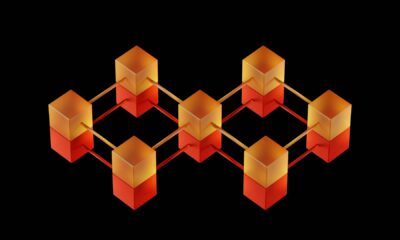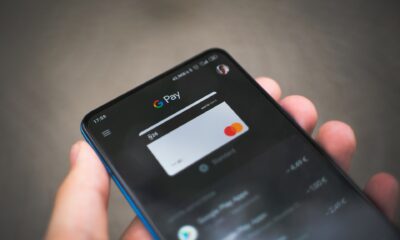Crypto
How LODEpay’s Price Oracle is Tackling Silver Spot Price Manipulation
Spot prices of gold and silver have historically been difficult to verify. Never truly reflecting the price people pay for precious metals, they usually exclude premiums paid by bullion investors. LODEpay’s new pricing mechanism is now providing more transparent pricing data, delivering deep insights into dealer prices globally, along with the different components of gold and silver pricing.

The new year has ushered in an era of reckoning throughout the financial services landscape. Technology is now being leveraged to reshape the traditional notions that have safeguarded the elites’ reign over financial markets. Social platforms like Reddit and Twitter have been host to noteworthy movements, like the WallStreetBets-led GameStop short squeeze and the rise in adoption of cryptocurrencies like Bitcoin and Dogecoin.
It’s clear to see now that the digital age has enabled an active effort by everyday civilians to inform the future of finance, mediating discussions to tear down the barriers that were once thought to be beyond our control. And, LODEpay is starting by addressing the barriers to some of the world’s oldest investment vehicles: precious metals, like misleading ‘spot prices’, silver spot price manipulation and corruption.
The historic use cases of gold and silver
Thousands of years before global currencies came into circulation, commerce was conducted through barter. Trades typically occurred through the exchange of two goods that both parties deemed valuable, with precious metals like gold and silver assuming a universal status as mediums of exchange desirable by all. These metals were known as currency given that their value was indisputable, as inherently valuable assets with a limited supply and indestructible nature that made them suitable for wealth preservation.
However, as time progressed and government institutions were formed to regulate monetary matters, the paper money in our wallets today came to be, and banknotes and coins effectively replaced gold and silver as units of exchange. But taking precious metals out of the equation did not stifle their use. Gold and silver continued to represent wealth preservation tools, as people invested in these shiny metals to hedge against the inflationary tendencies of global currencies and economic uncertainty. Hence the rise of a new ‘spot price’ system for the exchange of gold and silver.
The problem with the silver “spot price”: what you see is not what you get
Today, investors turn to financial markets to determine the spot prices for physical gold and silver, which seldom reflect the actual cost associated with obtaining them. The term “spot price” refers to the price at which a given asset, typically a commodity, can be purchased by traders for immediate delivery. However, the spot price, of silver or other precious metals, does not take into account the associated bullion premiums – fees for the transportation, minting, and insurance of the physical metals – afforded by dealers.
So, when purchasing physical gold and silver bullion, investors can expect to pay an additional amount, independent of the spot price. Premiums can be costly, with up to 50% additional fees on one ounce of investment-grade silver. Thus, the spot price of does not accurately reflect the sales price of the precious metal, nor does gold’s or any other. The only people that can truly obtain them at spot price are bullion dealers in gold and silver.

For that reason, speculators have become increasingly skeptical of the alleged prices of these metals, recognizing the possibility of price manipulation as they have been historically undervalued. The Gold Anti-Trust Action Committee (GATA) was founded for this very reason. Launched by Bill Murphy and Chris Powell, the organization has worked to combat the price suppression of gold.
“It’s the most corrupt market in the history of the world,” said Murphy in an interview with LODEpay Media, calling out U.S. financial institution JP Morgan Chase for their role in the matter. Last year, JP Morgan was forced to pay over $920 million for manipulating precious metals markets, following an investigation from the Commodity Futures Trading Commission (CFTC).
In a market so entangled in corruption and ambiguity, and to give gold and silver stackers the transparency they have sought for years, LODEpay has launched its Price Oracle, a blockchain-powered tool aimed at breaking down more barriers for precious metals markets.
LODEpay’s Price Oracle: Restoring Spot Price Transparency to Gold and Silver
The blockchain-powered gold and silver ecosystem, LODEpay, introduces a new pricing mechanism for the metals. It consists of a real-time feed extracting price data from bullion dealers around the world, cross-analyzing bullion sales prices (taking premiums into account) for gold and silver in their various forms. This development is significant for gold and silver investors because it provides a more accurate price feed for precious metals (no longer will they have to worry about discrepancies between spot and real prices).
With the Price Oracle, traders are informed of every aspect contributing to the sales price of the metals, all in real-time. The new mechanism aims to increase transparency and accountability within the market, while simultaneously enabling easier transactions with precious metals in both physical and digital forms. It also makes it possible to obtain these metals at the best price possible – like the spot prices once exclusively available to silver and gold bullion dealers.
Thus, the Price Oracle is just the latest testament to the power of technology and its potential to simplify the financial processes that once excluded the masses from reaping the rewards of a free market. With the recent influx of new silver investors, motivated after a successful short squeeze, it is becoming clear that there will be a need for a mechanism like this to tackle price discrepancies and ensure a more transparent market environment.
Learn more on the LODEpay wallet app, available on Android and iOS.
(Featured image by tookapic from Pixabay )
DISCLAIMER: This article was written by a third party contributor and does not reflect the opinion of Born2Invest, its management, staff or its associates. Please review our disclaimer for more information.
This article may include forward-looking statements. These forward-looking statements generally are identified by the words “believe,” “project,” “estimate,” “become,” “plan,” “will,” and similar expressions. These forward-looking statements involve known and unknown risks as well as uncertainties, including those discussed in the following cautionary statements and elsewhere in this article and on this site. Although the Company may believe that its expectations are based on reasonable assumptions, the actual results that the Company may achieve may differ materially from any forward-looking statements, which reflect the opinions of the management of the Company only as of the date hereof. Additionally, please make sure to read these important disclosures.

-

 Cannabis7 days ago
Cannabis7 days agoMedical Cannabis vs Street Weed: Why Therapy Makes More Sense in 2025
-

 Crowdfunding2 weeks ago
Crowdfunding2 weeks agoDeep Learning Italia Launches €400K Crowdfunding to Bridge Italy’s Tech Skills Gap
-

 Impact Investing7 days ago
Impact Investing7 days agoCOP30: Fragmented Climate Politics, Multi-Speed Transition, and Emerging Investment Opportunities
-

 Markets2 weeks ago
Markets2 weeks agoRice Market Rebounds from Oversold Lows Amid Weak Demand

























